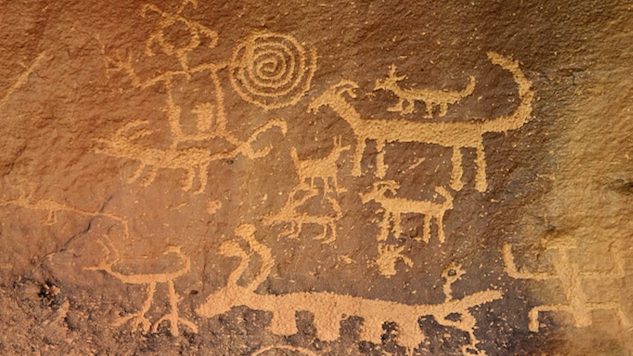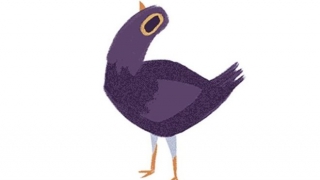On Memetics and the Transfer of Cultural Information
Photo: MLADEN ANTONOV/AFP/Getty Images Science Features memes
In recent weeks, the meme “trash dove” took the world by storm, flopping its way across Facebook into “dms,” statuses and comments. Trash dove became an actor in animated videos and was even brought to life through real world reenactments by talented costume makers and headbangers. Merely an online sticker, trash dove came to embody so much in so little time and was able to say much of what we were thinking but not quite ready or able to articulate.
While our reasons for using trash dove on social media may vary, what is evident is that memes are meta; they can encompass a variety of emotions, thoughts, feelings, actions and even political discourse and humor. In abstracting the world at large into content, everything becomes more digestible, even consumable across one of the most accessible mediums—the internet.
While the internet has in many ways proliferated the usage of memes, they have existed since human beings began to share information with one another. The internet has globalized memes and has allowed people to absorb information from those sharing content on the other side of the world at exponential rates and add their own spin on them. In the past, long before the internet, memes were shared as far as one could travel across land and water and over the course of longer periods of time. Contrary to popular belief, memes have been here with us all along.

The Historical Origins of Memes
Memes have existed since the dawn of civilization and have been used to share and exchange cultural information between human beings for thousands of years. The word “meme,” coined by evolutionary biologist Richard Dawkins in his 1976 novel The Selfish Gene, describes the transfer of cultural information from one person to the next. Similarly to genes, memes have competed for survival throughout history and only the dankest become viral. As cultural units, memes are vessels of information which have journeyed across human civilization to popularize certain ideas and in turn, ensure their continuity.
Our ancestors used memes for cave drawings and to teach one another to create fire. Wherever there has been an opportunity for learning and sharing knowledge, memes have enabled us to replicate concepts and ideas and build upon them. While human endeavors such as art and music may not enable us to survive genetically, they are fantastic examples of how memetics have developed. Our brains are oversized and have the ability to store vast troves of information for later use. Becoming an incredible violin player may not be conducive to spreading one’s seed, yet it is a meme that has become revered amongst humans in their pursuance of the arts.
Ultimately, human beings have evolved genetically to replicate information and be extremely good at making memes. We are such excellent meme-makers that we no longer use them explicitly for sharing concepts and ideas vital to survival. In the past, memetics allowed us to learn quickly from one another how to carry out tasks that would provide us with greater capacities for hunting, foraging, gathering, finding fresh water to eventually writing, reading, creating vast agricultural systems, building shelter, traversing continents and even more amazing feats. In becoming next-level copycats, human beings have collaborated with one another to create innumerable memes, both for survival and consumption.
A major defining characteristic of successful and not so successful memes is the extent to which they last and mutate. While some memes, such as learning to boil water to ensure no dangerous bacteria lingers in it or wearing animal furs to keep our naked bodies warm in the midst of winter, have remained relevant and largely static for centuries if not thousand of years, while others, such as a unicycling frog named “dat boi,” come into existence swiftly and disappear altogether just as quickly. Furthermore, instances of memes such as “Hand Me the Aux Cord” draw on other memes and mutate to become meta. When these memes mutate into warp drive, at some point they no longer become funny and vanish between the surface of newer memes. Given this, memes of the internet age, while existing on a greater scale, are not as successful as those who have remained relevant since earlier times.
Memes of Today
The memes of today are Kermits, spongegars and trash doves. Those of the not-so-far-away past were lolcats, challenges accepted and forever alones. We use memes not only for absurd humor but also for societal and political commentary. At this time in human history, every single thing that we think or do can be turned into a meme and is likely a meme already. Memes can be jokes about miniscule everyday observations or the endless woes of mental illness. Memes are cathartic and allow us to process information through the abstraction of tragedy and global events. Whatever our interests or needs, a meme exists for us.
In the age of the internet, the ways in which we communicate with one another and share cultural information change every day and do so at alarming rates. We can speak with anyone anywhere at any time and relay information about the space and time we are situated in in moments or as it happens. This ability to virtually participate with billions of others in meme-making means that the sharing and exchanging of information is limitless. Memetics is an emerging discipline and as the way we communicate and share information continues to be ever-changing, this will be an area of study for decades to come.
The concept of “memetic engineering,” similar to genetic engineering, describes a process of careful selection of memes to be created and distributed for successful replication. In doing so, the memetic engineer would purposefully construct memes to influence others to replicate them. These memes may be anything from political ideology used to sway voters to commercials enticing potential customers. Regardless, memetic engineers can seize the memes of production to draw in supporters.
Both memetics and memetic engineering can be used to better understand memes as simplistic and absurd as trash dove but also as complex and nuanced as the 2016 U.S. presidential election. Having existed as long as humans have transferred cultural information from one to the next, certain memes have remained largely unchanged and survived the ages while others mutate exponentially yet come and go at a moment’s notice. With the rise of the internet, our attention spans have shortened and the amount of available disposable content has increased. As a result, we require an influx of memes to remain entertained while navigating this technological era.
Main and lead images via twitter @striffleric and @WHATINTARNATlON
Deidre Olsen is a Toronto-based writer, blogger and poet with a love affair of social justice, technology and dank memes. In their spare time, you can find them learning Jiu Jitsu and how to code.